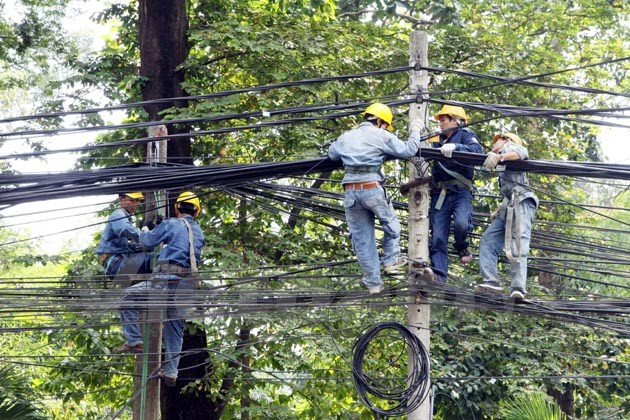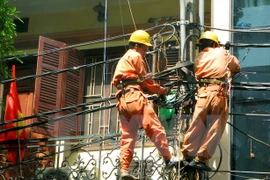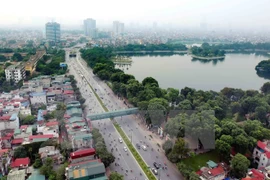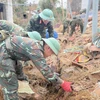Hanoi (VNA) - One of the mostconspicuous features of Hanoi’s old urban areas is the endless tangle ofoverhead electrical wires bundled precariously atop power poles.
To improve Hanoi’s image, city authoritiesearlier this year set themselves an ambitious task of becoming a ‘wirelesscity’ to remove the eyesores.
Specifically, the city aimed to put all threetypes of cables – electrical lines, telecommunication lines, and lighting wires– underground on 101 streets and roads, with the work divided into two phases.
However, only in October did the intersectoralworking group – comprised of personnel from the municipal constructiondepartment and the information department – submit to the People’s Committee aplan to move cables on 45 streets and roads in eight urban districts. The planstill has not been approved, making it unlikely set targets will be achievedthis year.
Dong Phuoc An, Deputy Director of the HanoiDepartment of Construction, said that the delay could be blamed ontime-consuming contract negotiations, issues with capital allocation –especially with the contractor Mobifone – and between implementing units.
Authorities have also found that collaborationbetween electricity, telecommunication and lighting units remains lacking, withone unit digging up the pavements to put cables underground before another unitarrives to once again dig up the tiles.
Aside from the disruptions to local residents’lives, some of the contractors have also failed to clean up after theirconstruction, leaving behind dirt and construction materials, causing risks totraffic and undermining the goal of the overall task, to beautify the city.
According to the city’s plan, from now to 2018,the city expects to put cables underground on 162 streets in four old urbandistricts.
In 2018-20, the city will conduct the work onthe remaining streets according to a memorandum signed between the city and theHanoi subsidiary of the State-owned Vietnam Electricity (EVN) andtelecommunication giants like VNPT, Viettel, MobiFone, FPT Telecom, and CMC.
For projects implemented with private capital,the construction department must urge businesses to step up their efforts, aswell as make sure these businesses clean up and restore pavements afterconstruction.
Businesses of different sectors are alsorequired to co-operate to share the underground space already built by other sectors.
Simultaneously, each district is also planningto do other tasks to beautify the city including stone paving, planting andpruning trees and improving the lighting system, among others.
However,progress here has also been slow, with the only street finished Giang Van Minh street of Ba Dinh district.-VNA






























